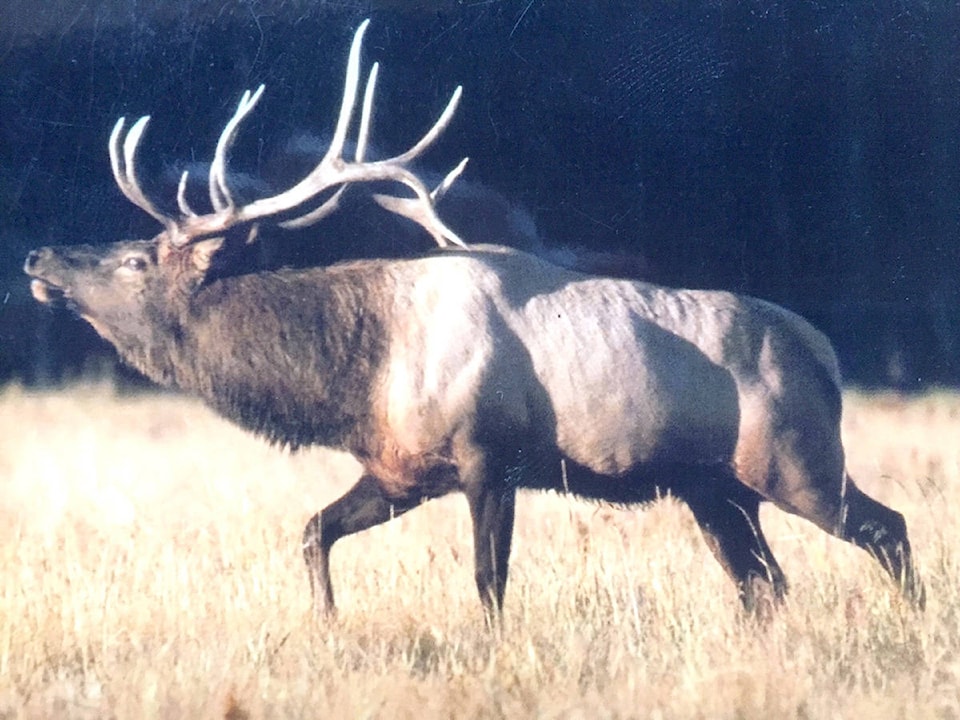FJ Hurtak
The Kootenay Wildlife Heritage Fund has organized a Big Game Symposium to be held April 13, at the Key City Theatre, Cranbrook.
All of the speakers are seasoned professional scientists, with decades of experience in “Big Game Management.” The guest biologists are all from outside the Kootenay district. They include Dr Valerius Geist, Dr. Charles E Kay, Dr. Vince Crichton, Dr Jim Beers, Mr. Ken Sumanik, and Mr. Ray DeMarchi.
Wildlife in general provides the Kootenays the opportunity to be called a four seasons destination. Spring and fall seasons are shoulder seasons in many parts of British Columbia, and in the spring we have bear season and early fly fishing.
Summer lends itself to the many golf courses and other tourist activities. Come September, the hunting season is in full swing and carries on into December.
Then the ski season/motorized snow sports begins.
During the fall season many rural butcher shops are busy handling the game harvested, for local residents, as well as for the thousands of BC resident hunters who frequent the Kootenay at that time.
Gas stations, tire shops, hotels, motels, garages, restaurants, guide outfitters, camp grounds as well as some ranchers that allow access for a fee to hunt, benefit.
In 1985 elk hunters harvested 1,750 bull elk in this district, or 400,000 plus pounds of organic wild meat, much of it value added into breakfast sausage, salami, summer sausage, Hungarian sausage, pepperoni jerky, etc, bringing an estimated $2 million into our local rural economy from just big game meat processing alone.
Following the regular hunting season, the cougar, lynx, bobcat, coyote wolf season commences, through to the end of March.
Predator hunting is expanding as we have managed for predators over the past three decades.
But is what we are doing enough? During the 2014 season cougar hunters harvested 210 cats. On average, cougars kill one deer per week, or 52 deer per year. These 210 cougars would have killed 10,920 deer in just a one year time frame.
These numbers do not include elk, moose, mountain goats, big horn sheep or caribou. When predators run out of big game they turn to domestic stock. Therefore they must be managed carefully.
In all seasons, people of all stripes rural and urban, discover more ways to enjoy wildlife. Big game is enjoyed vicariously through books, calendars, photographs, television, you-tube, social media and movies, and just being in the area where Big Game is known to occur.
The non-consumptive users are plentiful in the Kootenay district as well, most of them travelling from the east. There is no question that healthy, abundant wildlife populations are extremely important for all concerned and those types of numbers need to be restored in the Kootenay region.
To those of us who truly care about our big game resources and its management, we have now come to a point where we have seen a grave and serious decline in all ungulate populations. Our Woodland Caribou are ,sadly, the first well documented casualty and they soon be followed by Big Horn Sheep, Shiras Moose and Mule deer?
That’s where current management practices and policy direction seems to be taking us and it is painfully obvious we need an abrupt change of direction very soon.
Our Non Profit organization (KWHF) along with many other clubs, businesses, and individuals are combining our resources, to bring some big game expert practitioners to help us correct this dilemma, and to strengthen decision making and resource management on a solid factual foundation.
I would recommend that all who love our wildlife resources, attend this important Symposium, then judge for yourself. The symposium takes place at Cranbrook’s Key City Theatre, Saturday April 13, commencing at 9:30 a.m.
Tickets available now for just $20 all inclusive. All seats reserved. Get your tickets at www.keycitytheatre.com or by phone at 1-250-426-7006
